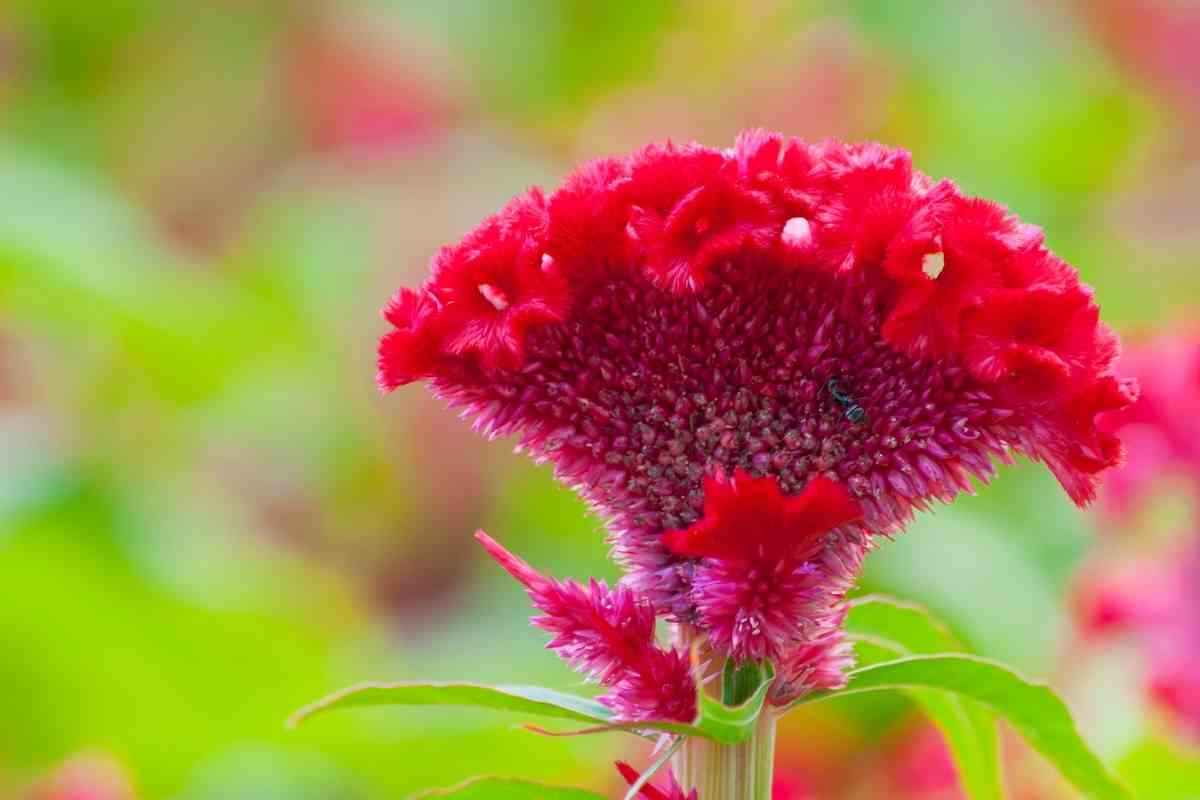The orchid genus Dracula, which means ‘little dragon’ in English, has 118 species native to Central America, Colombia, Ecuador, Mexico, and Peru.
Of these, the most common are:
- Dracula simia
- Dracula gigas
- and Dracula celosia
The first two are famous for their simian-shaped blooms, which is why they are known as Monkey Face Orchids.]
On the other hand, Dracula celosia has unusual blooms – instead of petals, it has cockscombs.
These blooms can last for up to 10 weeks, and the foliage turns from red to purple when moved indoors.
So how do you tend to these exciting plants? Read on to learn more about Dracula plant care.
Growing the Monkey Face Orchid (Dracula simia)
The Monkey Face Orchid thrives in high altitudes, preferably 3,000 feet or higher.
This explains why it’s native to the Ecuadorian and Peruvian highlands.

A mature Dracula simia measures between 12 and 20” tall. Its blooms are smaller with a 2” diameter.
However, they appear throughout the year and produce a pleasant scent, similar to ripe oranges.
After planting, it takes two months before the first foliage appears. You’ll have to wait three years to see the first flowers.
Sometimes, a Dracula simia can fail to produce blooms until the eighth year after propagation. That said, the plant produces flowers for 20 years before dying.
Be Aware – Despite their unique appearance and pleasant odor, it’s uncommon to find Monkey Face orchids in homes. They are hard to grow.
How to Propagate Dracula Simia
Here’s how to propagate Monkey Face orchids. You can use vegetative propagation or germination.
Vegetative Propagation
The easiest way to propagate Monkey Face orchids is using vegetative propagation.
Start by separating the roots from the rhizome, and then transplant each into a fresh growing pot. You should have new plants within two months.
To prevent spreading pests and diseases, avoid using affected rhizomes. Also, ensure that you sterilize your tools before starting.
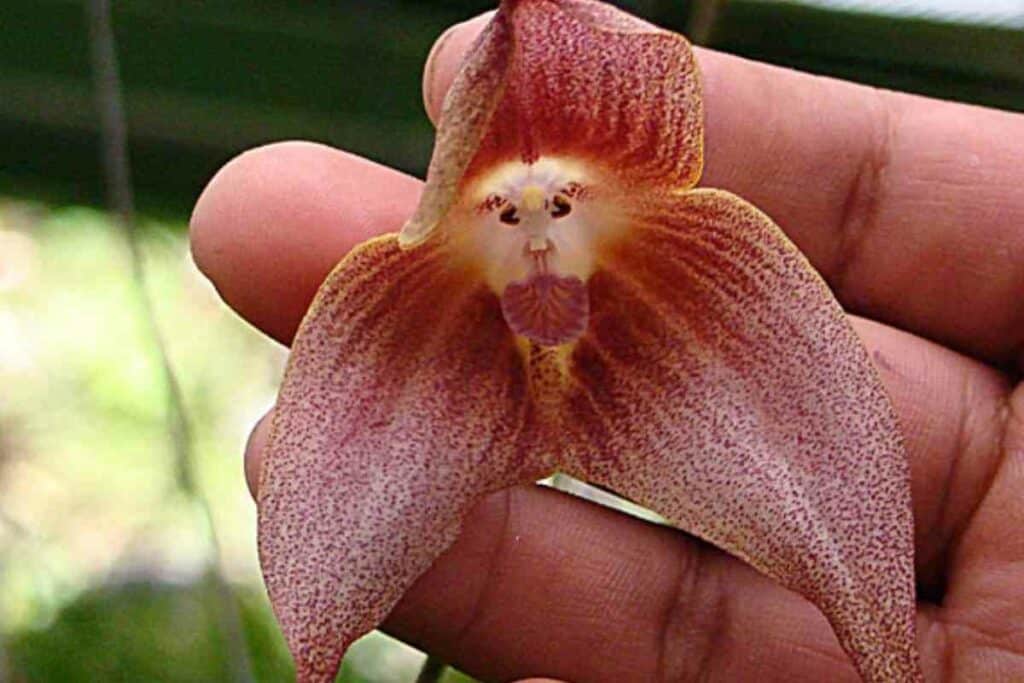
Germination
Germination involves the traditional seed planting below a thin layer of dirt.
It’s worth noting that orchids have tiny seeds that you can easily mistake for dust.
Generally, beginners shouldn’t germinate orchid seeds.
These seeds don’t have the requisite nutrients to support sprouting and growth, so you must know the suitable fertilizers to grow them successfully.
Avoid purchasing orchids seeds anywhere. Only get the seeds from a reputable dealer, especially if you’re a beginner.
However, if you are determined to grow orchids by germination, start by sterilizing the seeds and your tools.
The simplest way to sterilize seeds is by soaking them in a dilute bleach solution for a few minutes, then rinsing them with clean water.
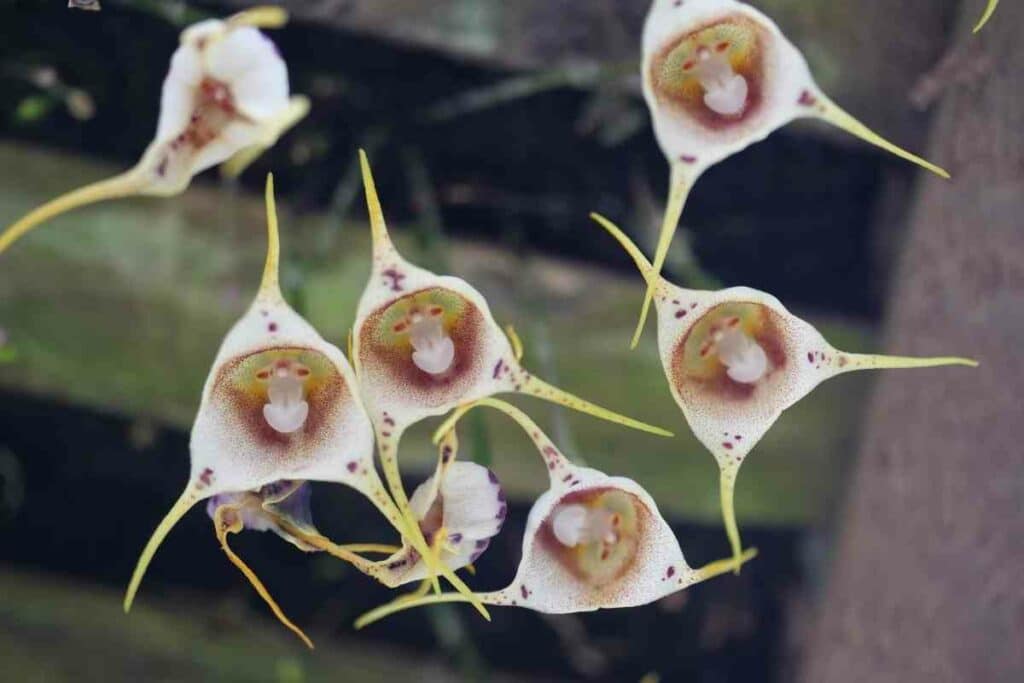
As for tools, wiping them with alcohol should be enough.
After Sterilization – Use mycorrhizal fungi to recreate the orchid’s natural growing environment. The fungi will penetrate the roots and provide the required nutrients through a symbiotic relationship.
Alternatively, you can use flasking, also called asymbiotic germination.
Here, you use Agar (bacterial culture medium) to substitute soil. It provides the required nutrients and growth hormones.
Benefits of Monkey Face Orchids
Monkey Face orchids are mainly used as decorations.
However, they aren’t common in many homes because they require much care.
Additionally, Monkey Face orchids are non-toxic to humans and animals. Their pleasant smell attracts wild pollinators like butterflies and bees.
Common Monkey Face Orchid Problems
The two most common challenges that affect Dracula simia orchids are pest attacks and root rot.
Pest Infestation
Aphids and ants are the most prevalent pests in orchid flowerbeds.
Others include:
It’s wise to check your plants regularly for mold and pest infestation, especially below the leaves.
If you notice mold, eggs, or other infestations, spray the plant with neem oil or insecticidal soap.
Also, remember to use sterilized tools when handling your blooming plants.
Root Rot
Root rot affects orchids and flowers that grow in shaded spots.
The most common signs of root rot are wilting and yellow leaves.
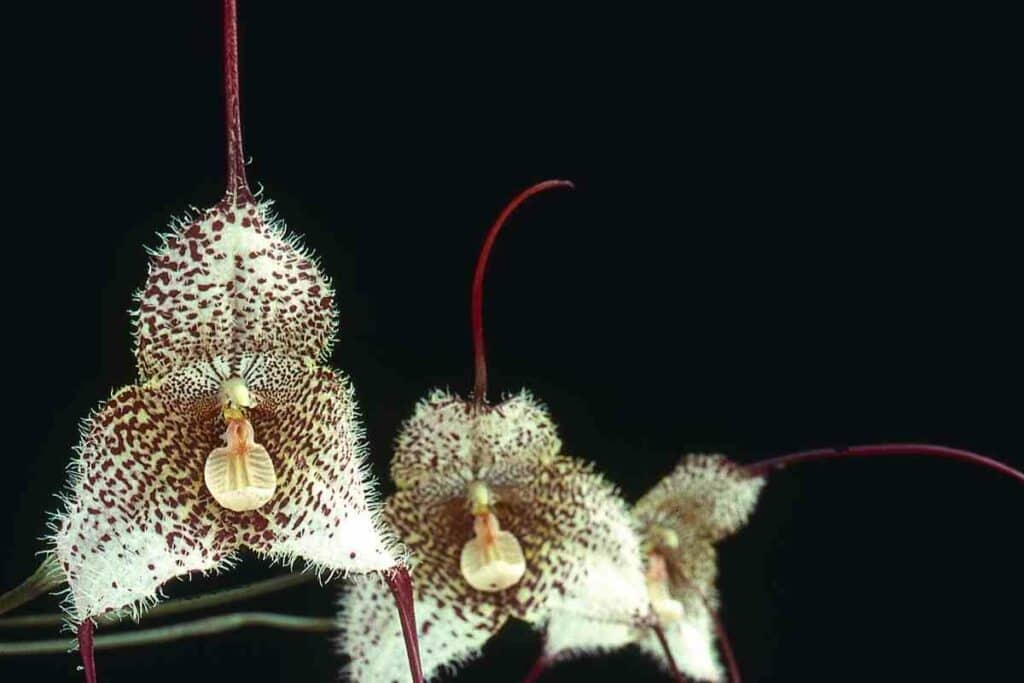
To solve root rot, remove the affected roots and repot the plant.
Other ways of combatting this problem are regulating the amount of water and drilling holes in the planting container.
Growing Dracula Celosia
Dracula celosia, also called ‘wool flower,’ is a member of the amaranth family that is edible and serves decorative purposes.
Interestingly, the leaves are only tasty and tender when young. They’re also rich in minerals and vitamins like other leafy greens.
However, when the plants bloom, the leaves turn bitter.
Simply Put – You can’t have it both ways with the Dracula celosia – you either grow it as food or wait until it blooms and produces its peculiar but beautiful flowers.
Unlike simian orchids, Dracula celosia doesn’t require a green thumb, making it a homeowner’s favorite.

The flower blooms best under sunny and dry conditions. You only need small amounts of water to prevent withering.
Dracula celosia is an annual plant. However, they can be short-lived perennials in hardy climates. Mature plants bloom for two to three years before dying.
How to Propagate Dracula Celosia
You can propagate Dracula celosia using seeds (germination) or cultivars.
Germination
Like the Monkey Face orchids, germinating Dracula celosia is undependable.
In its natural habitat, the plant survives by producing many seeds that counter the low germination rate.
As such, you need preparation (and some luck) to grow them indoors.
Start prepping your planting area at least a month after the last snowfall. Celosia seeds are hypersensitive to cold weather.
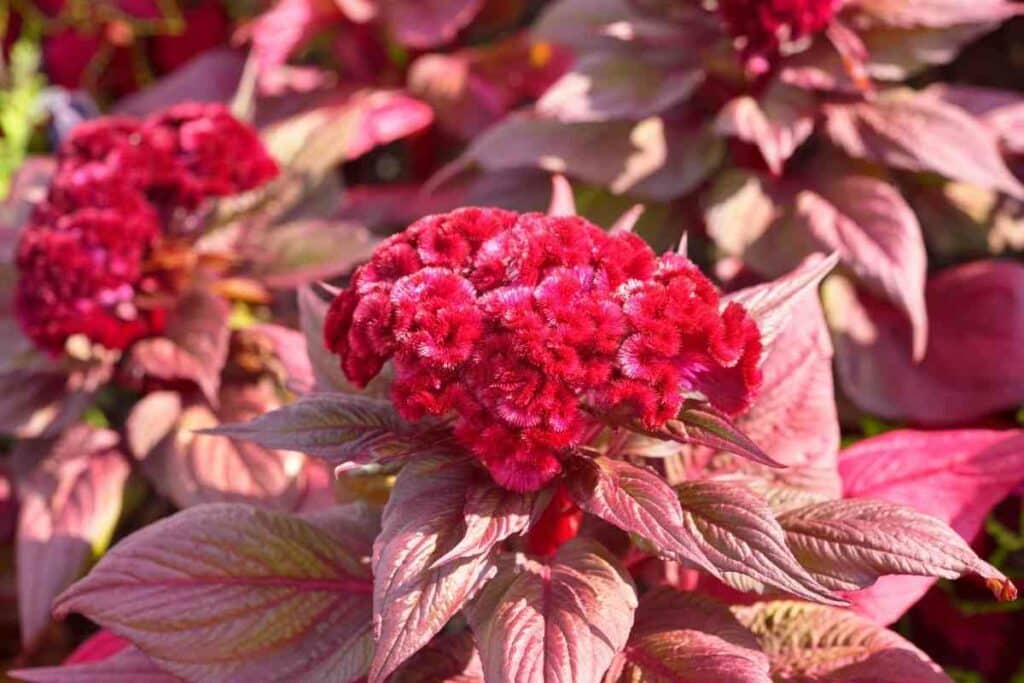
Celosia seeds can grow in the dark. After sterilization, cover them with ¼” of dirt. Ensure that the soil is always moist but never drenched.
Use a cover of your planter to conserve humidity and drill holes below it to improve drainage.
Key Takeaway – Remember that the seedlings depend on the moisture to live – otherwise, they die. The seedlings should be ready for transplanting after a few weeks.
Ensure that the weather is favorable before moving them from the nursery. Exposing seedlings to cold weather can kill them.
What about Re-seeding?
If you leave your Dracula Celosias through their blooming cycle, they produce many seeds.
You’re likely to see new plants growing once it rains.
You can prevent re-seeding by cutting the flower heads after they wither and begin dispersing seeds in your garden.
That said, re-seeding makes Dracula celosia an excellent filler plant for abandoned or unused areas of your backyard.
However, you must be careful because too many plants will cause a mess.
Using Cultivars
The three cultivars for propagating Dracula Celosia are:
- cockscomb
- plumed
- and wheat
While all have similar growing conditions, they differ in appearance.
1. Cockscomb Celosia
Cockscomb cultivars produce the most popular Celosia blooms.
The flowers are huge and require staking for support.
Some cockscomb celosias can grow up to three feet tall. Besides, their vastness makes them a focal point of your backyard.
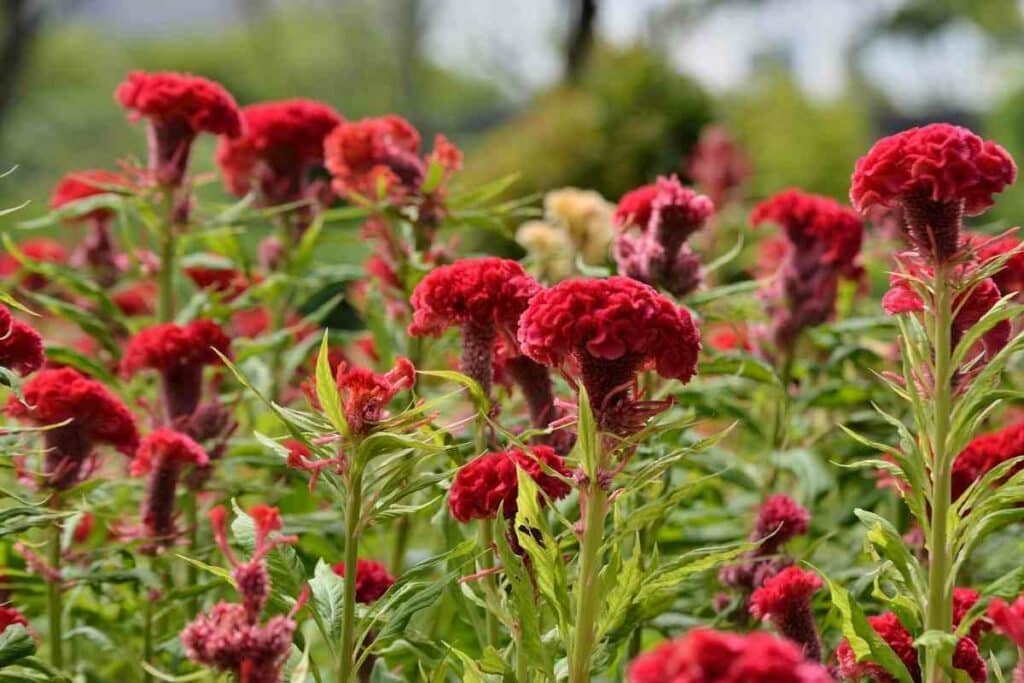
2. Plumed Celosia
Plumed cultivars are the shortest Celosias – nonetheless, they’re bigger than most orchid species.
Their shortness means they don’t require staking, and some varieties can fit in larger growing containers.
Most plumed cultivars have striking colors – expect to see red, orange, yellow, and purple blooms if you grow this variety.
Moreover, plumed cultivars are hardier than cockscomb and wheat-type Celosias.
3. Wheat-Type Celosia
Wheat-type Celosias don’t boast a widespread diversity as other Dracula celosia cultivars.
However, the few available variants have stunning looks.
Furthermore, wheat celosias bloom longer than other orchids.
Their flowers can grow a few weeks into autumn, long after other species have lost their blooms.
Most wheat-style cultivars grow between two and three feet tall.
This, coupled with their beautiful blooms, makes them the perfect decoration for your sidewalks, as they can interfere with the rest of your décor.
Some smaller varieties like the ‘flamingo’ wheat-style cultivar also work well as cut flowers.
Common Dracula Celosia Problems
Dracula celosia is a fairly hardy plant resistant to most pests and diseases and survives tough growing conditions.
If you don’t have a green thumb, you might want to consider this plant.
As mentioned above, the plant resists most pests, except for occasional attacks by aphids and mites.
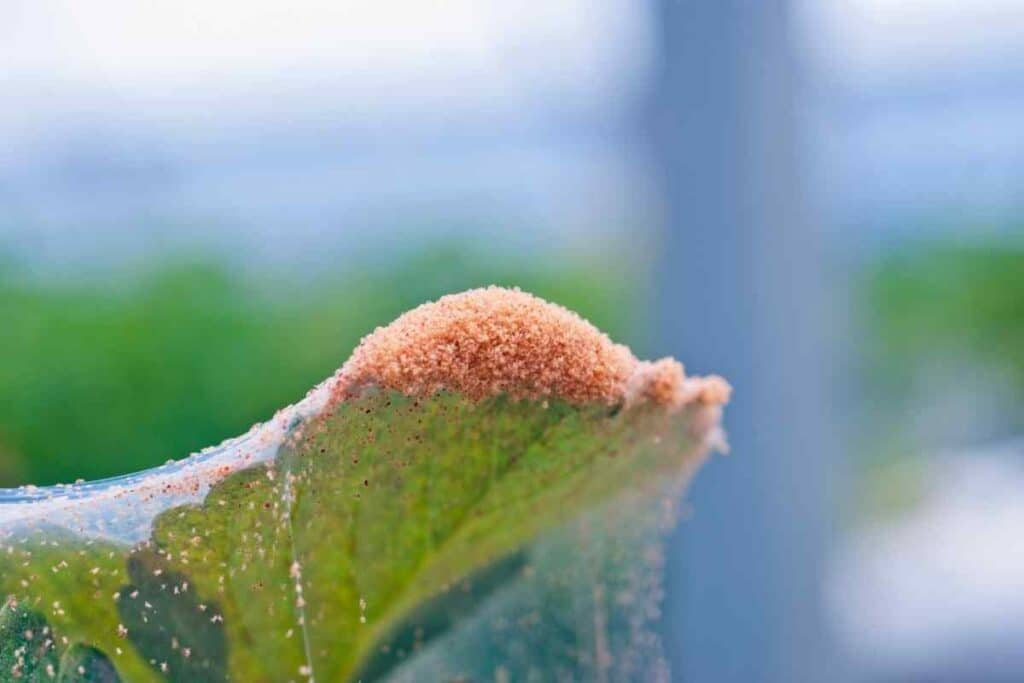
You can eliminate these by spraying insecticides or using organic remedies like neem oil and garlic.
Fungal infections and mold occur when you oversaturate the soil. Ensure that you use well-drained soil and drill holes into the planter.
Some Dracula celosia varieties grow tall and require staking to support the heavy branches.
Most growers make the mistake of constructing a support system that resembles a fence – this is wrong and causes entanglement.
Instead – Use one large supporting stake and attach individual branches to it.
Taking Care of Dracula Plants
Most Dracula plants thrive in warm and humid conditions.
The ideal temperature is 68oF during the daytime and 43oF at night. Also, you need to provide at least 70% humidity.
If your area doesn’t have these conditions, you can recreate them in a greenhouse.
Here’s how to take care of Dracula plants, regardless of species.
Growing Medium
Using orchid-specific soils to guarantee moisture retention and excellent drainage without impeding air circulation is essential.
The ideal pH range is between 5.5 and 7.
If you can’t purchase a readymade potting mix, make one yourself using:
- fir bark
- sphagnum moss
- and charcoal
Ensure that your pot has stones at the base to improve drainage.
Potting
Your growing container must have enough room to allow roots to spread without entanglement.
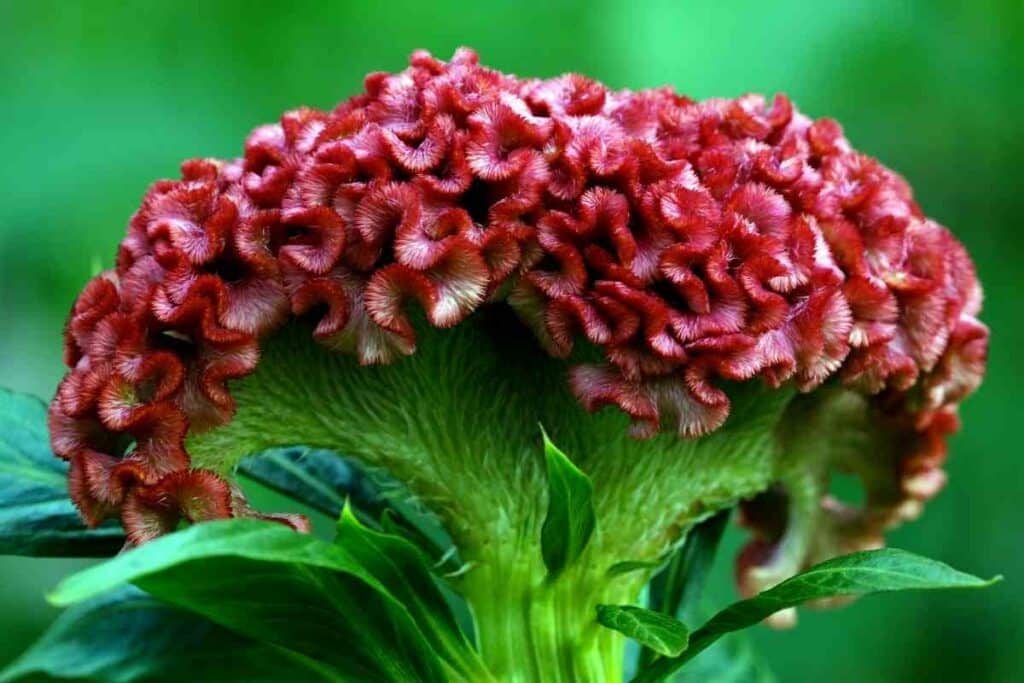
The pot must also have drainage holes to avoid oversaturation and prevent root rot.
Lighting
Most orchids can grow in the dark.
In fact, the plants suffer when exposed to sunlight, even partially.
Ideally, you should grow your orchids shaded but not in total darkness. This emulates their natural habitat.
Excellent Advice – You can tell if your Dracula plant is suffering from sunlight exposure by touching the leaves. If they feel warm, move the plant to a shade.
Watering
Although Dracula plants are hardy, they require a little and consistent water supply.
Sprinkle your plants once weekly to create a humid and moist environment.
You can determine the best time to water your Dracula plants using your sight or feeling the soil. If the leaves are green, don’t water them.
If they turn white, your plants need water. When the ground feels damp, water your plants.
Ensure that excess water runs through the drainage holes in your planting container. If the pot is inside a saucer, empty it after every watering cycle.
Reduce your watering frequency if you see fungal infections and root rot signs.
Temperature and Humidity
Dracula plants do well under hot and humid conditions.
If you’re growing them outdoors, you’ll need to move the container indoors during winter.
Regarding humidity, it needs to remain at 70% for optimal growth.
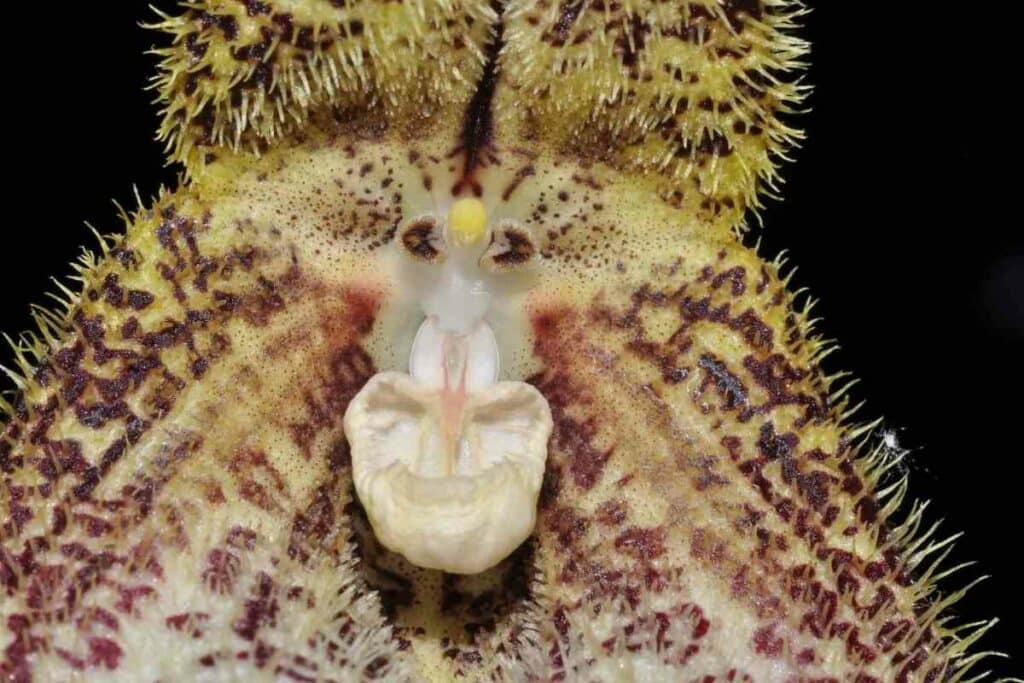
You can increase humidity by growing your plants in a greenhouse, purchasing a humidifier, misting, and placing the pot above a water tray.
When grown in a low-humidity environment, the blooms collapse.
On the Other Hand – Excess humidity increases the risk of mold and fungi. In such conditions, use a fan to improve air circulation.
Fertilizer Application
The best fertilizer for your Dracula plants is the one with equal proportions of:
- Nitrogen
- Phosphorus
- and Potassium
You can also use organic fertilizers and urea, provided the nitrogen composition doesn’t exceed 20%.
Excessive nitrogen causes vegetative growth, which can affect blooming.
When using standard fertilizers, apply the solution once monthly.
If diluted, fertilize weekly. Please avoid applying fertilizer when the plant is sick or withered.
Repotting
Repotting prevents root entanglement and controls the spread of diseases.
Experts recommend repotting your plants every two years to ensure optimal health.
Before repotting, sterilize our tools. Then, pick the healthy rhizomes and transplant them into new pots.
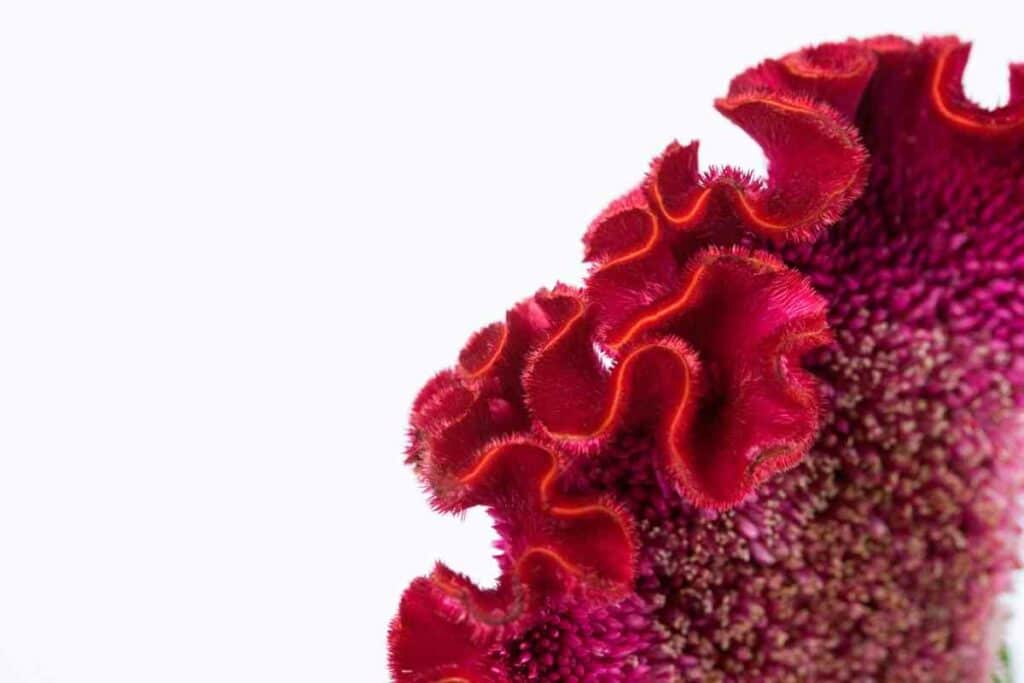
Remember to replace the potting mix to give more nutrients to your new flowers.
Pruning and Staking
Monkey Face orchids don’t need pruning and staking, as they’re small.
However, you might need to support the enormous Dracula celosia blooms.
Wrapping Up
If you don’t mind taking care of flowers as a pastime activity, you might want to try out Dracula plants.
Dracula celosias provide a bit of dilemma, as you have to choose between using them for decoration or as food.
Nonetheless, they’re exciting and don’t take much effort to grow.
On the other side, you have Monkey Face orchids with unique blooms. Propagating them isn’t easy, especially if you don’t have the cultivars.
Ultimately, your preference prevails – regardless of your choice, Dracula plants have an irrefutable beauty!
